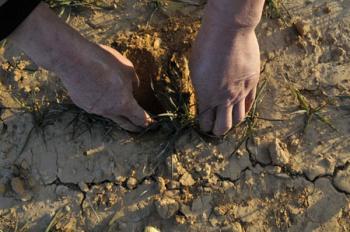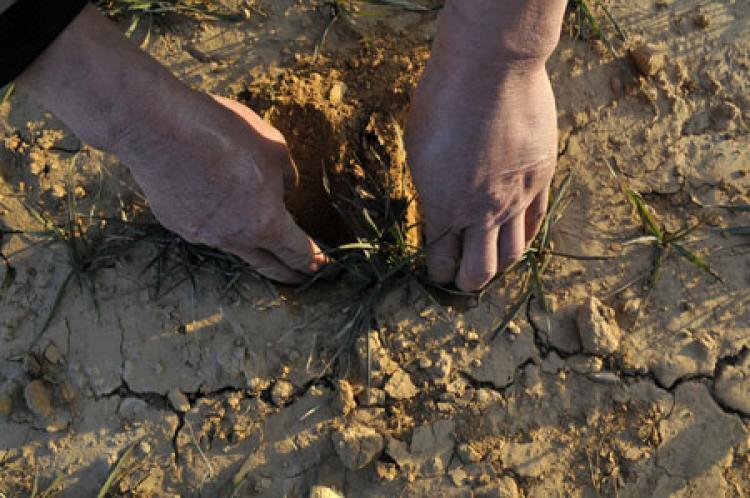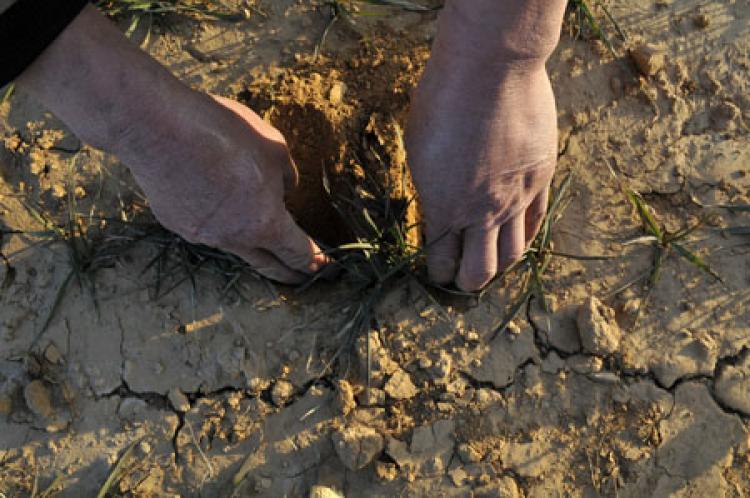China’s Drought Will Make Food More Expensive, UN Says
Northern China’s wheat production is threatened by severe droughts, and the country’s food market is likely to face an acute shortage.

A villager inspects the drought situation on his farmland on January 24, 2011 in Rizhao, Shandong province of China. Severe droughts threatens Northern China's wheat production as the country's food market will likely face a shortage. ChinaFotoPress/Getty Images
|Updated:






